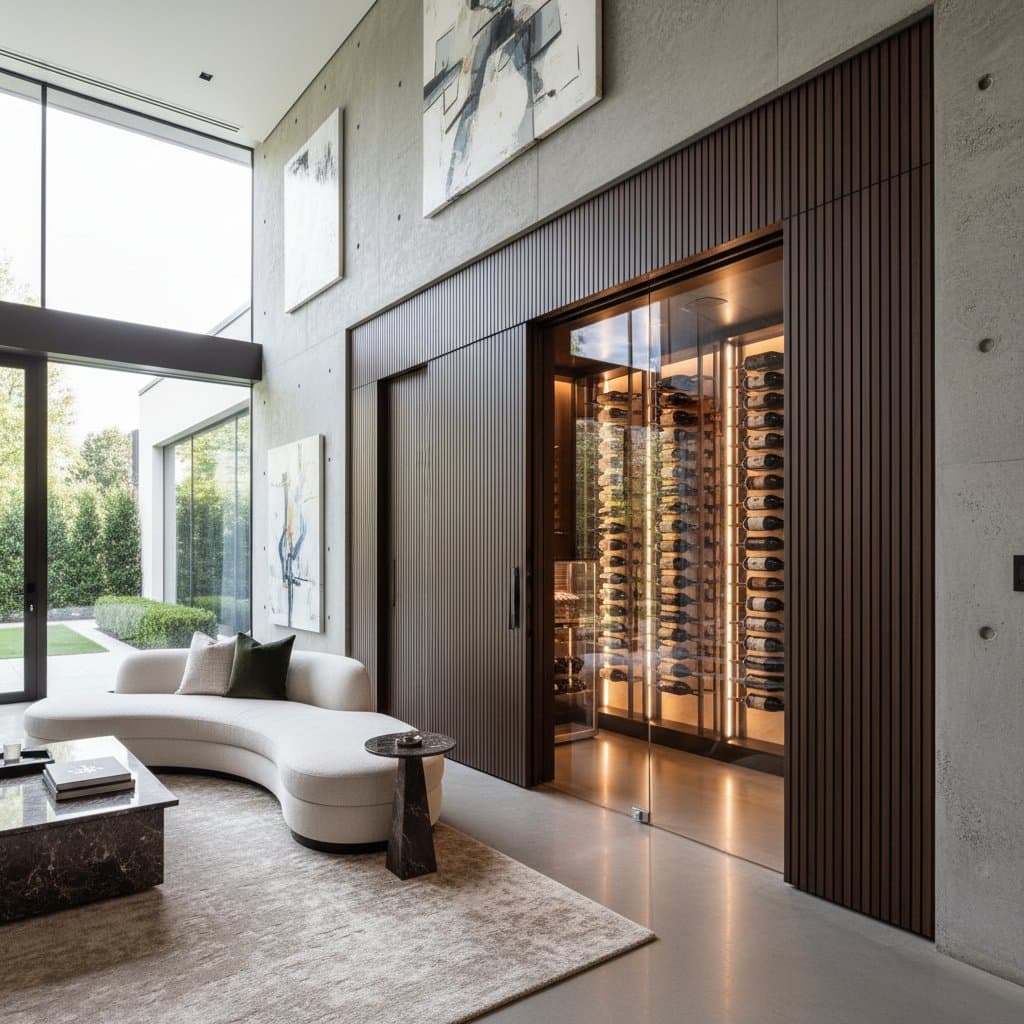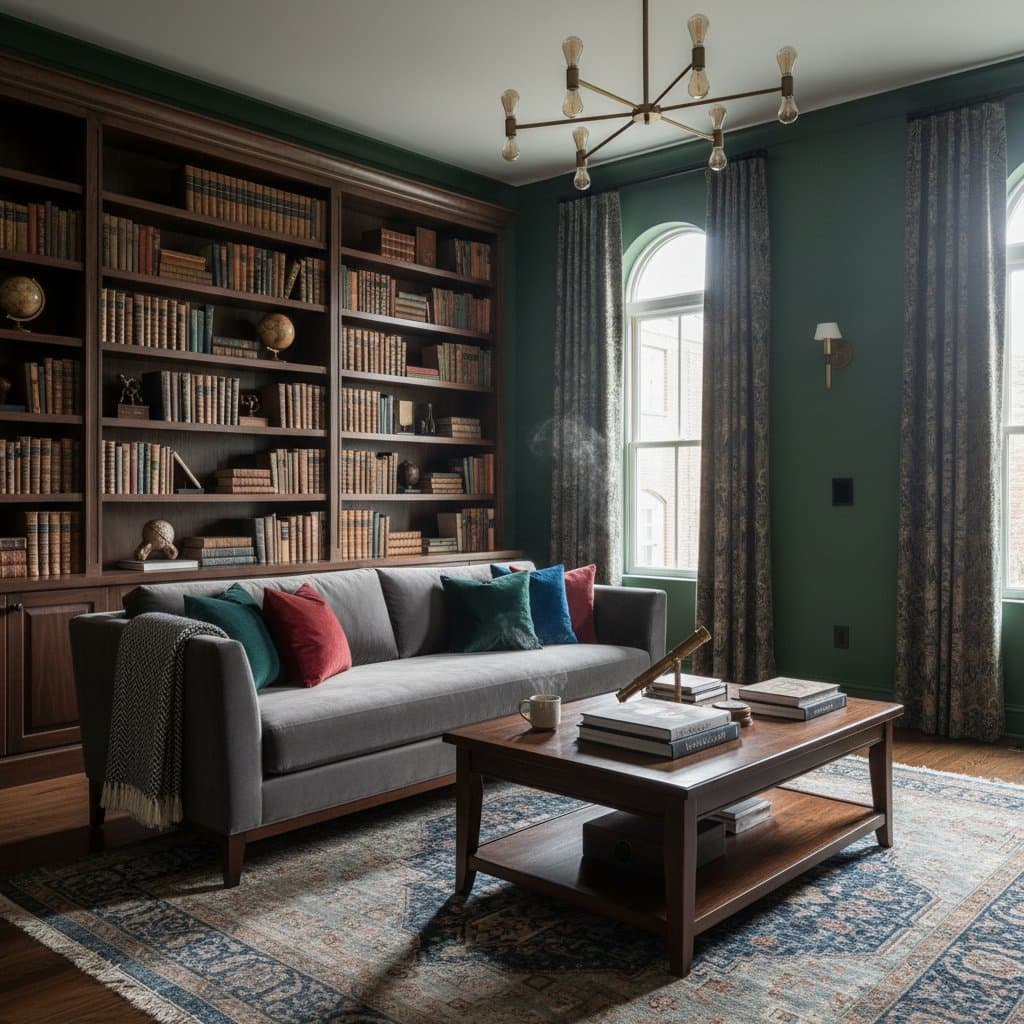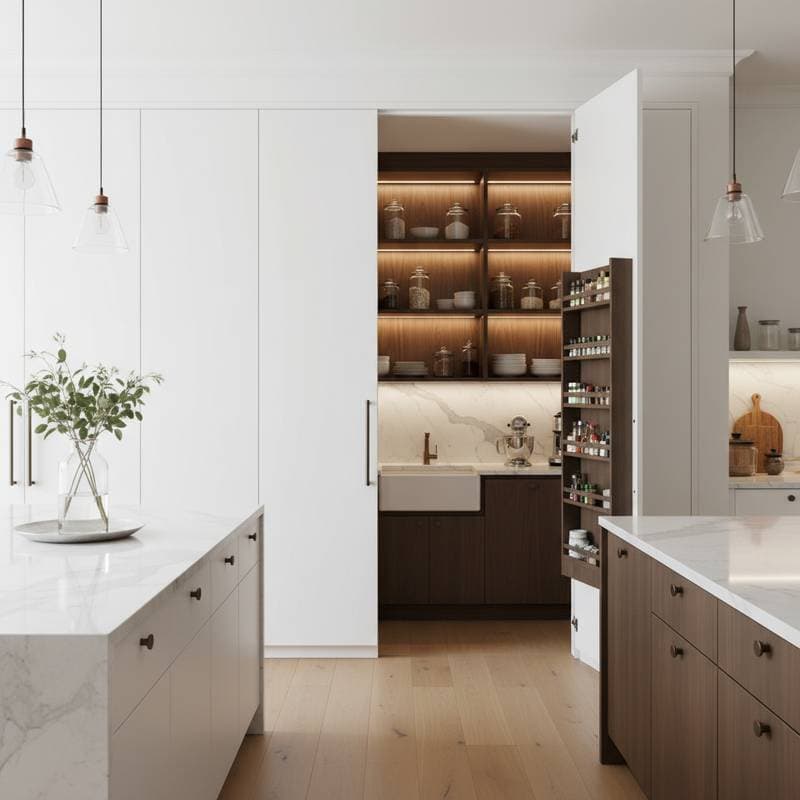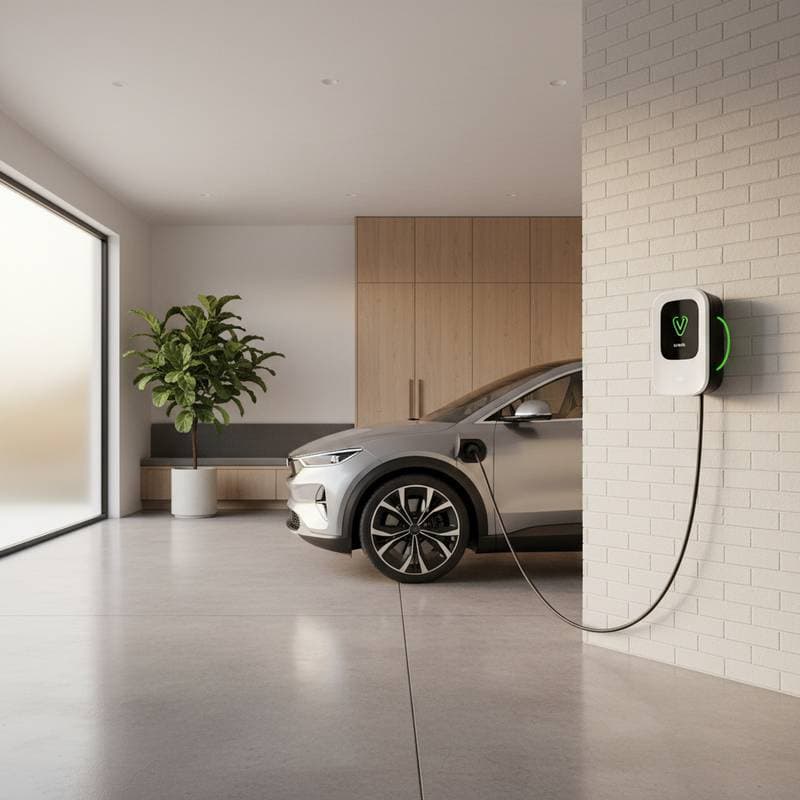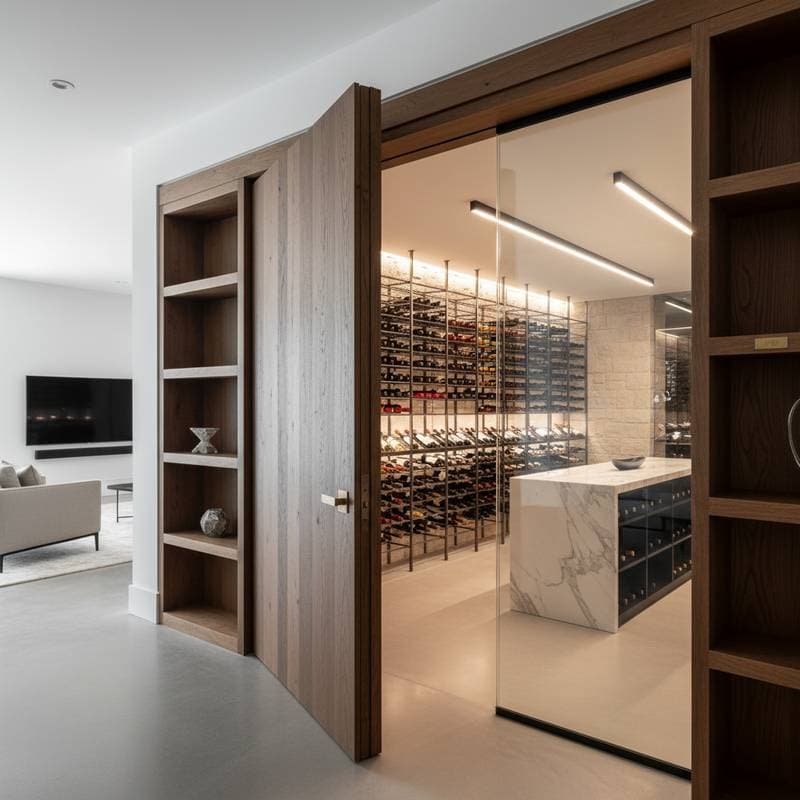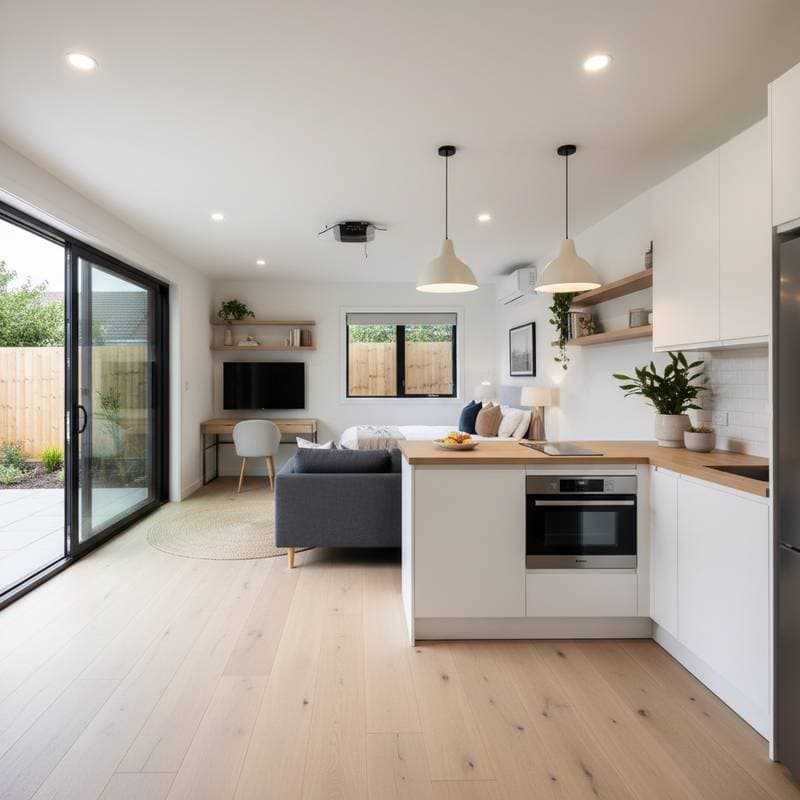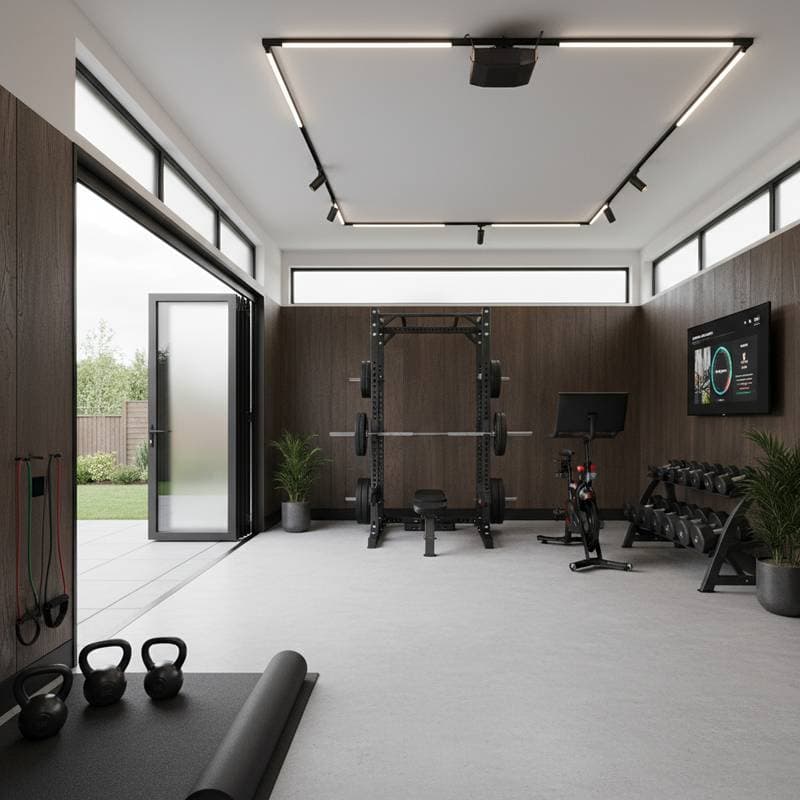Hidden Wine Cellars: A 15 Percent Return on Investment for 2025 Home Enhancements
Hidden wine cellars extend beyond the realms of grand estates or cinematic intrigue. Contemporary homeowners incorporate them to achieve tangible property appreciation. A thoughtfully crafted hidden wine cellar elevates resale value by approximately 15 percent in the luxury market. This addition not only impresses visually but also safeguards valuable collections while providing a memorable element that captivates potential buyers.
Essential Overview
A hidden wine cellar enhances property worth, optimizes storage environments, and appeals to affluent purchasers. Anticipate expenses between $25,000 and $80,000, influenced by dimensions and selected materials. Completion typically occurs within four to eight weeks. The result is a distinctive amenity that harmonizes aesthetics with utility, setting the home apart in competitive listings.
Guide to Installing a Hidden Wine Cellar
Follow these structured steps to integrate a hidden wine cellar seamlessly into your residence.
-
Select the optimal location. Basements offer ideal conditions due to natural insulation, yet closets, under-stair voids, or unused rooms serve effectively provided temperature regulation remains feasible.
-
Engineer the disguise. Employ techniques such as doors concealed behind bookshelves, mirrored surfaces, or panels aligned with surrounding woodwork to maintain architectural cohesion.
-
Incorporate climate management. Maintain temperatures around 55 degrees Fahrenheit with consistent humidity levels. Install robust insulation alongside a dedicated cooling apparatus to prevent fluctuations.
-
Select durable materials. Opt for stone accents, reclaimed wood paneling, and tempered glass enclosures to evoke opulence. Steer clear of unlined drywall, as it promotes moisture retention and potential degradation.
-
Integrate illumination and storage solutions. Utilize low-heat LED strips to highlight collections without compromising conditions. Design bespoke racks to accommodate various bottle sizes and maximize spatial efficiency.
-
Implement security measures. Incorporate discreet locking mechanisms or app-controlled access points to safeguard high-value inventory from unauthorized entry.
-
Secure necessary approvals. Consult local regulations; certain installations necessitate inspections for electrical systems, ventilation, or structural modifications prior to enclosure.
Breakdown of Expenses
Budgeting requires consideration of multiple components. The following table outlines typical costs and influencing factors.
| Component | Estimated Cost | Key Variables |
|---|---|---|
| Excavation or Framing | $5,000 - $20,000 | Accessibility, soil composition, and existing framework |
| Cooling System | $3,000 - $10,000 | Room volume and required capacity |
| Finishes and Racks | $10,000 - $30,000 | Material quality, custom fabrication, and integrated lighting |
| Concealed Entry | $2,000 - $8,000 | Intricate woodworking or automated features |
| Labor | $5,000 - $12,000 | Geographic location and specialist expertise |
Regional differences significantly impact totals; urban coastal areas or jurisdictions with rigorous codes incur higher fees. Modular prefabricated units or compact designs offer avenues to reduce expenditures without sacrificing quality.
Project Timeline
Standard installations span four to eight weeks from initial consultation to completion.
-
Design and Permitting Phase: One to two weeks for blueprints and regulatory clearance.
-
Core Construction and Systems Installation: Two to four weeks encompassing framing, cooling integration, and basic infrastructure.
-
Refinement and Concealment: One to two weeks for aesthetic detailing and final assembly.
Potential setbacks arise from bespoke elements like ornate millwork, mandatory electrical reviews, or delayed specialty imports such as reinforced glass.
Professional Installation Versus DIY Approach
Evaluate your capabilities and project scope to determine the best path.
Pursue DIY When:
-
A naturally stable basement exists, minimizing environmental controls.
-
The design targets a modest under-stair cabinet configuration.
-
You possess skills in basic framing, sealing, and trim application.
Engage Professionals When:
-
Excavation or advanced HVAC modifications prove necessary.
-
Seamless integration of hidden access or transparent enclosures is desired.
-
Long-term preservation of premium vintages demands precision.
Experts guarantee adherence to humidity protocols, effective vapor sealing, and compliance with building standards. Self-directed efforts economize on labor yet expose risks of environmental failures, such as mold proliferation or structural weakening from improper enclosure.
Required Tools and Materials
Assemble these essentials to support construction.
-
Stud finder and power drill for precise framing.
-
High-grade vapor barriers and rigid insulation panels.
-
Specialized wine cooling unit with appropriate BTU rating.
-
Digital hygrometer and thermometer for ongoing monitoring.
-
Impervious flooring options to resist spills and condensation.
-
Energy-efficient LED fixtures for ambient, non-thermal lighting.
-
Hardware kits for concealed hinges or smooth-sliding panels.
Prior to energizing the cooling system, verify electrical capacity; dedicate a circuit designed for sustained loads to avoid overloads.
Considerations by Region
Adapt designs to local climates and risks for optimal performance. In colder regions, reinforce wall insulation to combat external freezes. Humid or tropical zones benefit from integrated dehumidifiers and sump drainage to manage excess moisture. Seismic or storm-vulnerable areas require bolted racks and flexible shelving to withstand disturbances. Municipalities may classify such additions as room conversions, mandating permits; verify requirements early to prevent interruptions.
Ensuring Safety and Regulatory Compliance
Adhere to protocols that protect both the installation and occupants. Refrain from routing HVAC ducts absent professional oversight. Direct cooling exhaust away from habitable areas to maintain air quality. Position wiring distant from potential damp zones. In flood-susceptible locales, hoist electrical elements above ground level to mitigate water damage.
Expert Recommendations for Optimal Results
Seal entry points meticulously; even minor gaps disrupt thermal equilibrium and invite spoilage. Maintain an inventory map labeling storage slots, facilitating quick retrieval without prolonged exposure. For irreplaceable collections, provision uninterruptible power sources to sustain conditions during outages. Update your insurance policy to recognize the cellar as a valued enhancement, potentially qualifying for specialized coverage.
Frequently Asked Questions
Does a hidden wine cellar require building permits?
Yes, particularly when involving electrical additions, plumbing alterations, or significant structural changes.
Is installation feasible in a condominium?
It depends on association bylaws governing modifications to structure or utilities; obtain approval from property management beforehand.
Maximizing the Benefits of Your Hidden Wine Cellar
Once complete, your hidden wine cellar serves as more than storage; it becomes a refined retreat for savoring collections. Regular maintenance preserves its condition and value, ensuring the 15 percent appreciation translates into lasting equity. This investment not only elevates daily living but also positions the property advantageously in the luxury market.

